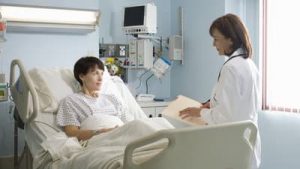A recent study concluded that assessing the ability of patients to list the months of the year backwards in addition to an assessment of subjective confusion and disorientation was accurate at diagnosing delirium in hospitalized adult patients. The months of the year backwards and assessment for general confusion was about as accurate as the traditional CAM test for delirium in hospitalized adults.
As many as 60% of older hospitalized patients develop delirium, which is associated with poor outcomes including increased morbidity, mortality, and length of stay, institutionalization, and functional decline (Crit Care Med 2001; 29:1370). Clinicians need to readily identify patients with delirium so that they can initiate treatment as quickly as possible. Which screening tool is most suitable remains unclear.
In this study, researchers tested the diagnostic accuracy of two screening methods, individually and in combination: the months of the year backwards (MOTYB) and the Spatial Span Forwards (SSF) test. The 265 participants were general hospital adult inpatients in a large tertiary referral hospital, screened on a single day by junior medical trainees. After screening, patients underwent two independent, formal delirium assessments: the Confusion Assessment Method (CAM) followed by the Delirium Rating Scale — Revised ’98. Delirium diagnosis was based on DSM IV criteria.
The most accurate screening method was achieved by MOTYB plus assessment for subjective or objective confusion (sensitivity, 93.8%; specificity, 84.7) MOTYB alone was most accurate in older patients, whereas in younger patients, a simultaneous combination of SSF with either MOTYB or assessment of subjective/objective confusion was best. In every case, addition of the CAM as a second-line screening test to improve specificity resulted in considerable loss of sensitivity.
COMMENT
These findings show that physicians can detect delirium reliably and with a high degree of sensitivity and specificity using the MOTYB, especially in older people. This instrument is very easy to use and requires relatively little training, in contrast to the CAM, which has been used in many research studies.

CITATION(S):
-
- O’Regan NA et al. Attention! A good bedside test for delirium? J Neurol Neurosurg Psychiatry 2014 Oct; 85:1122.
